 |
 |
 |
 |
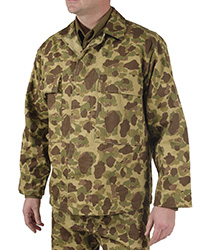
|
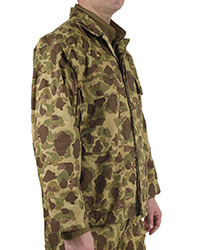
|
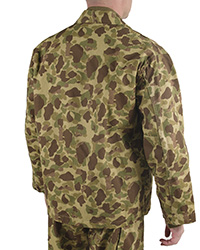
|
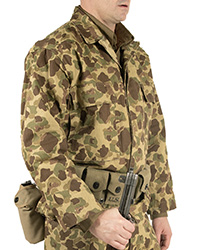
|
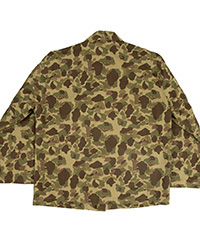
Rear detail
|
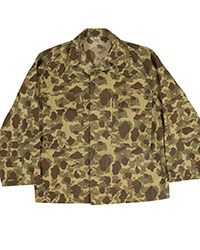
Loosely cut to fit
over field jackets
|
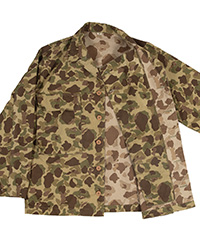
Gas flap, exact reproduction
buttons
|
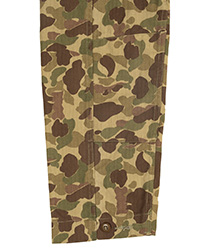
Elbow reinforcements
|
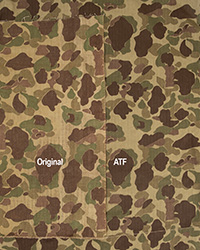
|
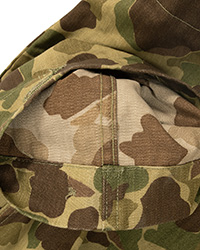
|
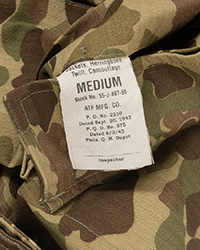
|
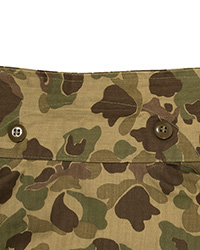
|
Comparison of original
fabric and ours
|
Double needle chain stitch
construction
|
Undercollar details
|
Undercollar detail
|
Reproduction of the non-reversible Army issue camouflage jackets used briefly in the Summer of 1944. This is an entirely new generation, copied directly from mint condition, original examples. The jackets are very similar in design to the OD7 models, with gas flap, two chest pockets, and button cuff adjustments.
Our reproductions duplicate all the details down to the buttons and spec labels. The fabric weave and weight as well as the camouflage pattern and colors are identical to the authentic items.
Sizing: Very large. Like the olive drab HBT jackets, these are oversized, about 4" more than a normal jacket of the same size. This is historically correct as they were designed to be worn over the field jacket. So, yes, they may seem "too big" but it's the fault of the US Army, not a mistake on our part.
Model in the photo is 5'10", 210lbs.
Notes:
1. There was no "matching" camo cap produced for this uniform in WWII.
2. The Army did not use the camouflage helmet cover like the Marines did.
3. This uniform is entirely different from that used by the Marines.
4. These uniforms are NOT reversible.
Imported
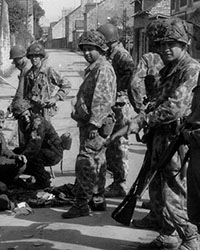
History
Early in WWII, the Army developed two camouflage uniforms. They were made from HBT cotton cloth, printed with double-sided "Spring" and "Fall" color camouflage. (This was the same cloth used by the Marines for their P42 and P44 camouflage uniforms.) Ultimately, coveralls and two-piece uniforms were produced. Unlike the uniforms made for the Marines, neither Army uniform was reversible, with both being made with the green side out. The coverall was quickly deemed too hot and clumsy to wear and was only issued in very limited numbers in both Europe and the Pacific. However, the two-piece uniform was more successful and was issued for troop trials in the summer of 1944.
Unfortunately, the preponderance of camouflage worn by the Germans led to a large number of "friendly fire" incidents, and the uniforms were withdrawn around the end of August. A veteran of the 29th Infantry Division commented, "those guys should have known better than to wear camouflage like damned Germans. We shot the hell out of them." Apparently, some troops in neighboring units were not advised of the "new" uniform being worn by their comrades and they reacted accordingly.
For the trials, most information indicates that troops of the 41st Armored Infantry Battalion (2nd Armored Division) were the primary recipients. Some evidence indicates that a few units of the 2nd and 30th Infantry Divisions also participated. Lastly, several veterans of various armored battalions serving in France and Italy as well as a few units fighting in the Philippines have reported that they were issued some camouflage uniforms.
|
|
 |
 |
 |
 |

|